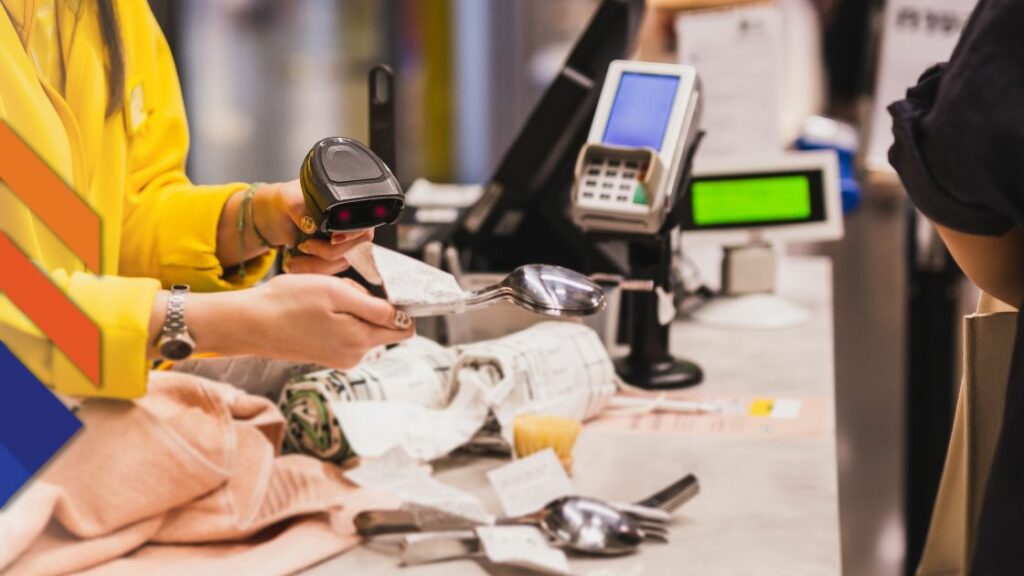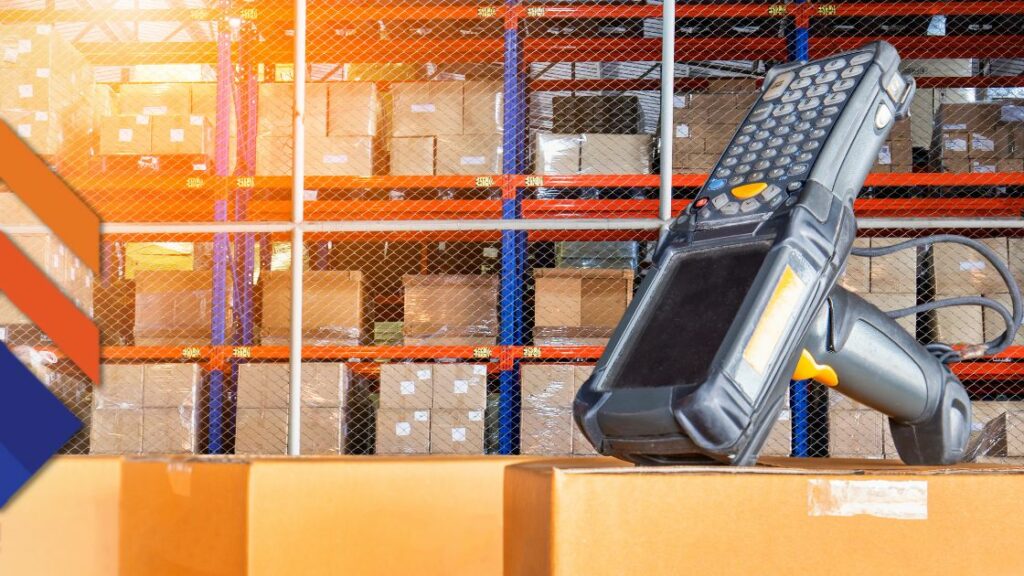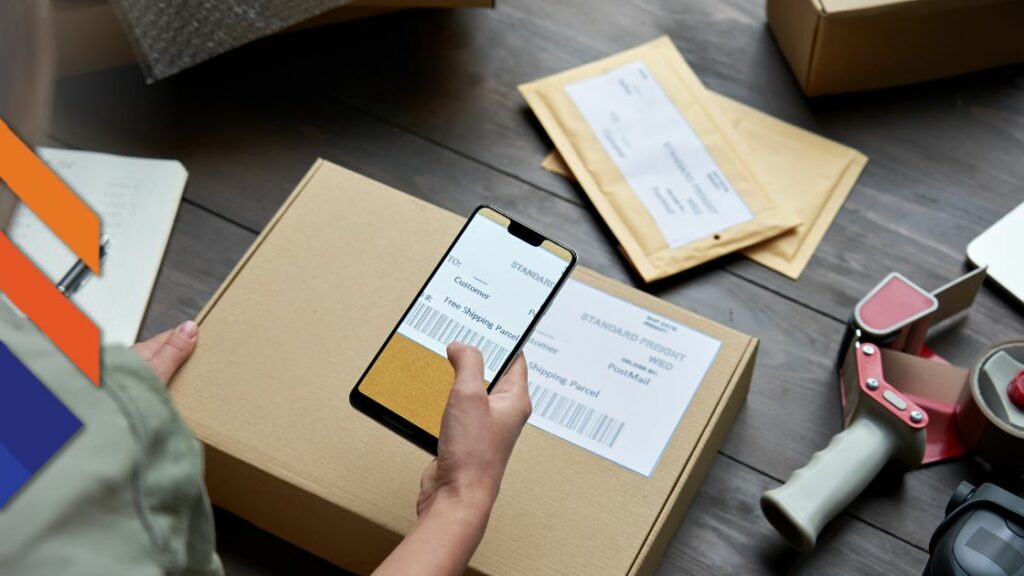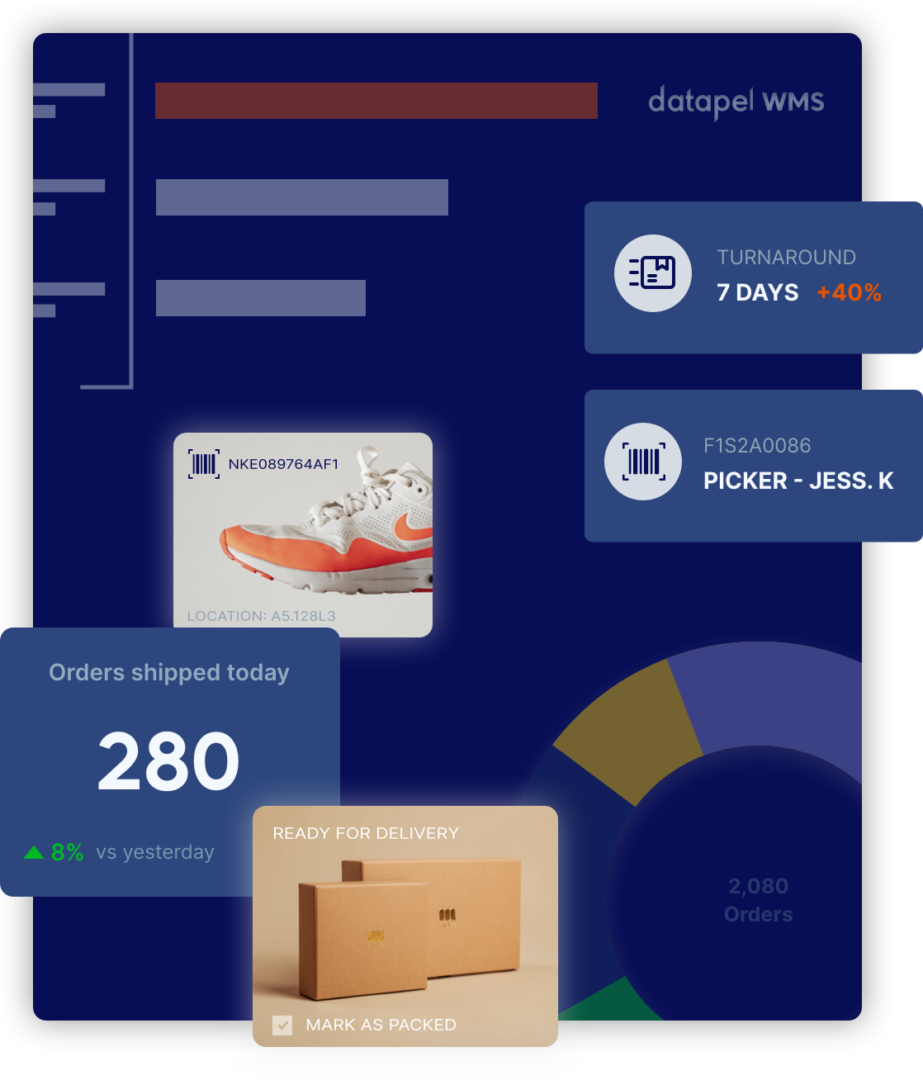Product Barcodes and Inventory Management: 5 Essentials Every Warehouse Should Know
Contents
Barcodes aren’t just symbols printed on product packaging—they’re the backbone of fast, accurate inventory management. In warehouse environments where every scan counts, barcodes improve product identification, reduce human error, and support real-time decision-making across your supply chain.
When combined with a Warehouse Management System (WMS), product barcodes unlock greater control over inventory movement, traceability, and fulfilment accuracy. Whether you’re handling 500 SKUs or 50,000, understanding how barcodes work—and how to use them effectively—can transform how your business manages stock.
In this guide, we unpack the five essential elements every warehouse should know when it comes to implementing and managing product barcodes.
1. What Is a Product Barcode?
A product barcode is a machine-readable code—usually printed on product packaging—that carries key product data such as item number, company prefix, price, or manufacture date. These barcode numbers are scanned to quickly retrieve product information and update your inventory records in real-time.
The most common type is the UPC-A, a 12-digit barcode used globally to identify a trade item. It’s especially popular in retail environments and among high-volume product sellers.
For smaller product packaging, businesses might use UPC-E, a compressed barcode format that encodes the same data in fewer digits.
By enabling accurate scanning, barcodes support better service delivery, faster warehouse workflows, and more efficient supply chain operations.
2. Getting Barcodes for Your Products
a. How Do I Get Barcodes for My Products?
To assign barcode numbers to your products, you’ll need to register with GS1, the global standards body. Creating a GS1 account gives your company a unique prefix, which is the foundation for generating Global Trade Item Numbers (GTINs).
Each GTIN ensures your product identity is unique, regardless of where it’s sold or manufactured—helping you manage products across different locations and systems.
b. What Is a Check Digit?
When generating GTINs, a check digit is automatically added as the last digit in the barcode. It helps verify that the code is correct during scanning. This simple calculation prevents errors and ensures accurate tracking across your supply chain.
The GTIN, including the check digit, is encoded in your barcode using either UPC-A, UPC-E or another approved format.
3. How Barcodes Work in Warehouse Management
Barcodes simplify inventory control by capturing product data through scanning. Each scan tells your WMS exactly where an item is, what it is, and what to do with it next—whether that’s moving it to storage, packing it for dispatch, or flagging it for a return.
Barcodes reduce manual data entry, improve order accuracy, and maintain traceability from inbound to outbound logistics.
Here’s where barcodes make the biggest difference in your warehouse:
- Receiving: Scan product packaging upon arrival to log goods in and verify quantity.
- Put-away: Assign items to precise locations using barcode data.
- Picking and Packing: Use barcode scanning to guide staff, confirm item numbers, and reduce mispicks.
- Dispatch: Ensure the right products are sent to the right customers—every time.
4. Barcode Types and When to Use Them
Barcodes fall into two groups: linear (1D) and matrix (2D). Your choice depends on how much product data needs to be encoded and the scanning equipment in use.
Common Formats:
- UPC-A: 12-digit linear barcode used for general retail and product sell-through in stores.
- UPC-E: Compact format for smaller product packaging.
- EAN-13: Common across Europe, similar to UPC-A but with 13 digits.
- QR Codes: 2D barcodes used when additional data (like batch info or weight) must be stored in a small space.
Your barcode format should align with your industry, workflow, and future scalability. For example, manufacturers tracking expiry dates might prefer 2D codes, while distributors often favour linear formats for rapid scanning.
5. Making the Most of Barcodes + WMS Integration
Barcodes alone are powerful—but when integrated into a WMS, they deliver a full-service improvement across the entire warehouse.
Here’s what this integration unlocks:
a. Real-Time Inventory Tracking
Every scan updates the system instantly. This level of data accuracy allows businesses to manage stock levels across multiple sites or warehouses, reducing risk of overselling or stockouts.
b. Improved Accuracy and Speed
Barcodes help automate picking, packing, and replenishment—removing manual steps and reducing the chance of human error.
c. Traceability and Compliance
By scanning at every stage, you create a complete audit trail for every trade item. This is critical in industries like food or healthcare, where recalls or regulatory reviews may occur.
Barcode Implementation Tips from Warehouse Experts
To ensure success when rolling out barcodes in your warehouse:
- ✅ Use high-quality labels and reliable printers to prevent scanning failures.
- ✅ Test that your scanners work with all barcode types you plan to use.
- ✅ Ensure your WMS is ready to process data from multiple sources and locations.
- ✅ Plan for the future—your barcode system should scale as your product catalogue grows.
- ✅ Train warehouse teams to understand the difference between barcode formats, scanning techniques, and system alerts.
Common Questions About Barcodes
Can I look up a product by barcode number?
Yes. Some online services and mobile apps allow consumers and businesses to look up product data using barcode numbers—often showing the product description, price, and retailer.
Do I need a barcode on my product in Australia?
If you plan to sell your product through major Australian retailers or marketplaces, yes. A GS1-issued barcode ensures your product is uniquely identifiable and ready for retail supply chain integration.
What’s the difference between UPC-A and UPC-E?
The primary difference is space and encoding. UPC-A contains 12 digits and is more commonly used. UPC-E is a space-saving version with 6 digits plus a check digit—ideal for small packaging.
Challenges and Considerations
Final Thoughts
It’s easy to underestimate barcodes. After all, they’re just a few lines and digits on a label, right?
But in a busy warehouse—where dozens of orders are flying out the door and accuracy matters—barcodes do the heavy lifting behind the scenes. When used properly and paired with the right WMS, they take the guesswork out of stock management, make data entry a non-issue, and keep your team moving.
If you’re dealing with frequent stock errors, delayed dispatch, or just trying to get a clearer picture of where your products are at any given moment, barcodes are one of the most reliable tools you can bring into your operation.
And the best part? It’s not just about speed or efficiency—it’s about giving your team the confidence to get it right, every time.
Whether you’re just getting started with barcodes or refining an existing setup, getting it right can make all the difference.

In my role, I oversee the development of insightful blogs that delve into the intricacies of warehouse management. Each piece reflects my dedication to empowering businesses through informative content. Through my team’s extensive experience in the industry, we aim to bring clarity to the complexities of WMS, helping businesses make informed decisions.
Join me on a journey through the ever-evolving landscape of warehouse technology as we explore the latest trends, industry insights, and practical tips to streamline your operations. Feel free to connect, and let’s embark on a collaborative exploration of how WMS can redefine your business efficiency.
Cheers to innovation, efficiency, and the exciting world of warehouse management!











